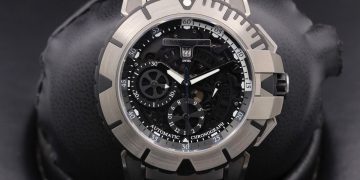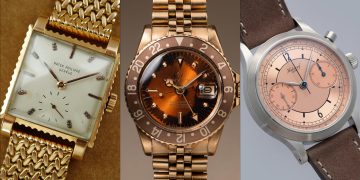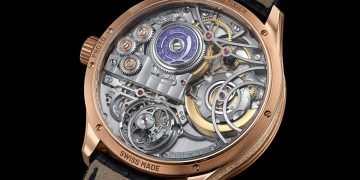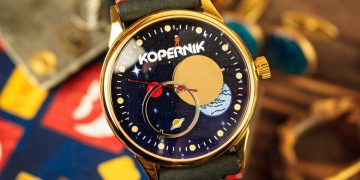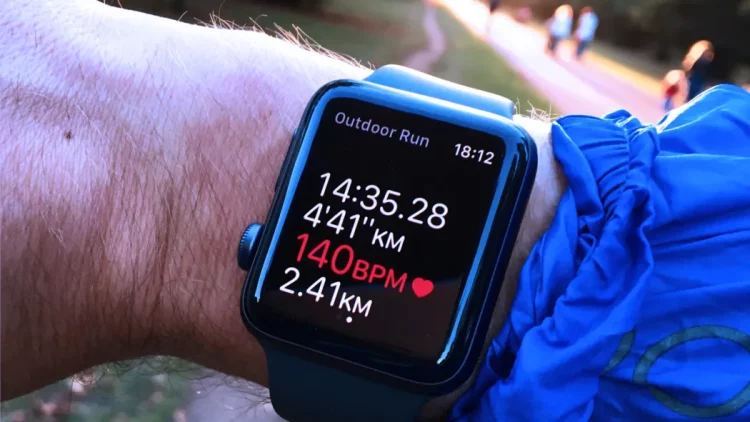Introduction: The Apple Watch – A Fusion of Craft and Technology
Since its debut in 2015, the Apple Watch has become much more than just a smartwatch. It has transformed the way we interact with technology, elevating the concept of a wearable device into a seamless extension of our everyday lives. Apple’s entry into the smartwatch market wasn’t just about adding a new product to its portfolio—it was a new way to experience technology. Apple took what it knew about creating premium products like the iPhone, iPad, and Mac, and applied that same level of precision, design, and innovation to the Apple Watch.
In this article, we’ll explore the craftsmanship and technology behind the Apple Watch, breaking down what makes it a masterpiece in the world of wearables. From the development of its advanced hardware to the sleek software design, the Apple Watch is a perfect blend of engineering and aesthetics. We’ll cover the materials, design principles, technology stack, and innovative features that have made the Apple Watch a leader in the smartwatch industry. By examining its core features, performance, and advancements over time, we’ll understand why it remains an unparalleled product in the competitive world of wearables.
1. The Birth of the Apple Watch: Design Philosophy and Vision
a. Apple’s Vision for the Apple Watch
When Apple set out to design the Apple Watch, the company was keen on creating a product that did more than just tell the time or serve as a simple fitness tracker. Apple sought to create a luxury wearable device that would not only meet practical needs but also serve as a statement of style and sophistication. The vision for the Apple Watch was to marry technology and craftsmanship, with a focus on making a highly functional device that users would want to wear every day.
Apple’s Chief Design Officer at the time, Jony Ive, was instrumental in shaping the Apple Watch’s design. The goal was to create a watch that was not just a piece of technology but also a personal accessory, blending form with function. This duality of luxury and functionality became the cornerstone of the Apple Watch’s success.
b. Material Choices and Craftsmanship
One of the key features that distinguish the Apple Watch is its emphasis on premium materials and attention to detail in construction. Apple’s design team carefully selected materials that would provide both aesthetic appeal and durability, ensuring that the Apple Watch could withstand everyday use while maintaining a premium feel. Some of the materials used in the Apple Watch include:
- Aluminum: The standard Apple Watch Series models are made of high-grade aluminum, a material known for being both lightweight and sturdy.
- Stainless Steel: For the higher-end models like the Apple Watch Series in stainless steel, Apple uses polished metal that adds a luxurious touch and increased durability.
- Titanium: Introduced with the Apple Watch Series 5, the Titanium model combines strength with a lighter weight, offering a more premium option.
- Ceramic: The Apple Watch Edition made from ceramic is not only sleek but also highly resistant to scratches, providing an elite look and feel.
- Sapphire Crystal: The display is protected by sapphire crystal, one of the hardest substances available, ensuring the watch remains scratch-resistant and maintains clarity.
These material choices are part of Apple’s commitment to crafting a luxurious yet practical wearable. Each model of the Apple Watch is designed to not only be a device you wear but something you will enjoy using every day.
2. The Heart of the Apple Watch: Core Technology and Innovation
At the core of the Apple Watch is the combination of cutting-edge hardware and software working together to create a seamless user experience. Apple has continually pushed the boundaries of innovation and performance with each new iteration of the watch, resulting in faster processors, better sensors, and more sophisticated software features.
a. The Apple Watch Processor: Power Behind the Device
The processor is the heart of any modern smartwatch, and the Apple Watch is no exception. Apple has developed custom System on a Chip (SoC) designs for the Apple Watch, including the S1, S2, S3, S4, S5, and S6 chips, with the latest models featuring the S7 and S8 chipsets. These chips are designed to provide excellent performance while also optimizing power consumption, which is crucial for a device that needs to maintain long battery life despite its compact size.
- Efficiency and Performance: The custom Apple-designed chips are highly efficient, providing enough power for smooth performance without draining the battery quickly.
- Machine Learning and AI: The chips also enable machine learning capabilities, supporting features like heart rate detection, fall detection, and Siri voice recognition.
b. Sensors and Tracking Capabilities: The Apple Watch as a Health Monitor
One of the most innovative features of the Apple Watch is its ability to monitor and track a wide variety of health metrics, making it much more than just a smartwatch—it’s a personal health device. Apple has integrated a variety of sensors that allow the watch to monitor different aspects of a user’s well-being:
- Heart Rate Sensor: The Apple Watch includes an optical heart sensor that continuously monitors the user’s heart rate and alerts them if their heart rate rises or falls outside of a normal range.
- ECG (Electrocardiogram): Starting with the Apple Watch Series 4, Apple introduced ECG functionality, enabling users to take an ECG reading directly from their wrist, a feature that could potentially save lives by identifying irregular heart rhythms like atrial fibrillation (AFib).
- Blood Oxygen Sensor: Introduced with the Series 6, this sensor measures blood oxygen levels, providing insights into the user’s respiratory health and potentially aiding in the detection of health issues like sleep apnea.
- Accelerometer and Gyroscope: These sensors help detect falls, track activity and workouts, and measure movement during different physical activities. The ability to detect a fall is particularly important for elderly users, providing a safety feature that alerts emergency contacts or services if needed.
- Compass and Altimeter: The newer Apple Watch models come with built-in altimeters to measure elevation changes, perfect for those who love hiking, climbing, or skiing. The compass is also useful for navigation during outdoor activities.
The combination of these sensors makes the Apple Watch one of the most comprehensive health trackers available in a consumer device.

3. WatchOS: The Software That Powers the Apple Watch
While the hardware of the Apple Watch is impressive, its software—watchOS—is where the magic truly happens. watchOS is the custom operating system that powers the Apple Watch, and its features and user interface are designed to maximize the potential of the hardware. Let’s look at how watchOS is built to enhance the user experience.
a. User Interface: Intuitive, Interactive, and Customizable
watchOS provides an intuitive user interface with features that make the Apple Watch easy to navigate and use:
- Watch Faces: Users can customize their watch faces to include information that’s most relevant to them, such as the time, weather, calendar events, and more.
- Notifications and Alerts: watchOS seamlessly integrates with the Apple ecosystem, sending notifications directly to the Apple Watch for messages, calls, emails, and app alerts. The Haptic feedback provides tactile responses to each notification, making it easier to stay informed without needing to look at the device constantly.
- Apps and Siri Integration: watchOS offers a wide range of apps designed specifically for the Apple Watch. Whether it’s fitness apps, music streaming, messaging, or even payments with Apple Pay, the watch provides an app-rich experience. Siri’s integration with the Apple Watch allows users to complete tasks hands-free, from sending messages to setting reminders or controlling smart home devices.
b. Fitness and Health Integration: watchOS as a Fitness Hub
One of the core features of watchOS is its ability to manage health and fitness data. Apple Watch’s Activity Rings are a visual representation of a user’s movement, exercise, and standing goals. Users can track their progress in real time and receive notifications to keep them motivated.
The Health app on the iPhone, combined with the Apple Watch, provides users with a comprehensive view of their fitness and health metrics. This integration with iOS allows users to keep track of long-term health trends and get detailed information about metrics like step counts, calories burned, exercise minutes, and sleep patterns.
4. Apple Watch Models: Craft and Technology Across Different Tiers
Apple offers a range of Apple Watch models, each catering to different segments of the market, while maintaining the same focus on high-quality craftsmanship and technology. Let’s break down the models and their unique features.
a. Apple Watch Series (Standard Models)
The standard models are known for offering premium features at a more accessible price point, making them ideal for a broad audience. They come in aluminum, stainless steel, and titanium versions, with options for fitness tracking, notifications, and basic health monitoring.
b. Apple Watch SE
The Apple Watch SE is a more budget-friendly version of the Apple Watch, offering a great value without sacrificing the key features of the watch, such as fitness tracking, notifications, and watchOS integration. The SE model provides an entry point for users who don’t need the latest cutting-edge features, such as ECG or blood oxygen sensors, but still want a premium Apple product.
c. Apple Watch Ultra
The Apple Watch Ultra targets outdoor enthusiasts and adventurers. Featuring titanium construction, a larger display, extra-long battery life, and enhanced features like dual-frequency GPS, the Apple Watch Ultra is built to withstand more rugged environments, making it ideal for those who engage in extreme sports or outdoor activities.
5. The Future of Apple Watch: What’s Next?
The Apple Watch is constantly evolving, with each new iteration bringing new features and improvements. Future trends could include:
- Longer Battery Life: Although the Apple Watch has impressive battery optimization, users still desire longer-lasting power for continuous health monitoring and multi-day use.
- More Health Features: Apple will likely continue enhancing the health-monitoring capabilities of the watch, possibly adding blood glucose monitoring, stress tracking, or more advanced sleep analytics.
- Advanced Fitness Features: As the Apple Watch becomes more integrated into fitness and sports, we can expect more workout types, advanced tracking, and even more integration with other fitness apps.
Conclusion: A Masterpiece of Craft and Technology
The Apple Watch is a testament to Apple’s commitment to craftsmanship, innovation, and technology. By seamlessly blending premium materials, advanced technology, and a sleek design, the Apple Watch has set a new standard for wearables. Whether you’re using it for health monitoring, fitness tracking, or staying connected on the go, the Apple Watch offers a complete and elegant solution that redefines what a smartwatch can be. Through its continued innovation, the Apple Watch remains at the forefront of the wearable technology industry, shaping the future of personal devices.



